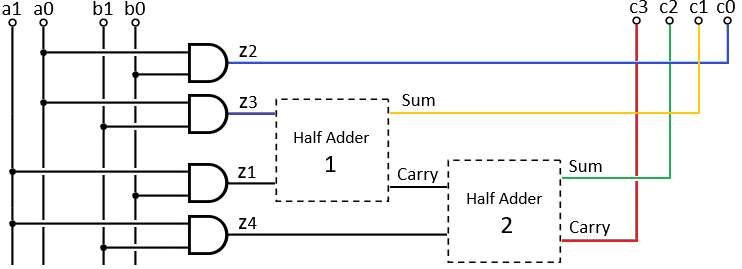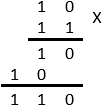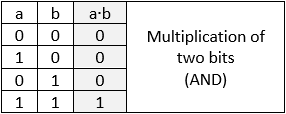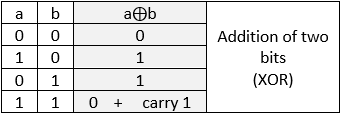|
|||||
|
0
×
0
=
0


The general process of multiplying two sets of two bits (a1 a0) and (b1 b0) is according to the following steps:  In order to better understand the circuit of the set of two, two bits multiplier we draw the circuit with the half adder as a box, now we can see clearly way the calculations take place. 
1) The result of the first multiplication is the value of c0 = a0b0 (blue line). 2) Now perform the addition of c1 = a1 b0 ⨁ a0 b1. This operation is performed by the half adder no. 1 circuit because it gets two values which are not including a carry from c0. (see example 12). The result sum is the value of c1 (yellow line). 3) Now perform the addition of c2 = a1 b1 ⨁ carry. This operation is performed by the half adder no. 2 circuit notice that one input is the result of the carry from half adder number 1. The sum is the value of c2 (green line). 4) The result of the carry of the second adder is the value of c3 (red line). |
|
|||||||||||||||||||||||||||||||||||
|
×
=
|






